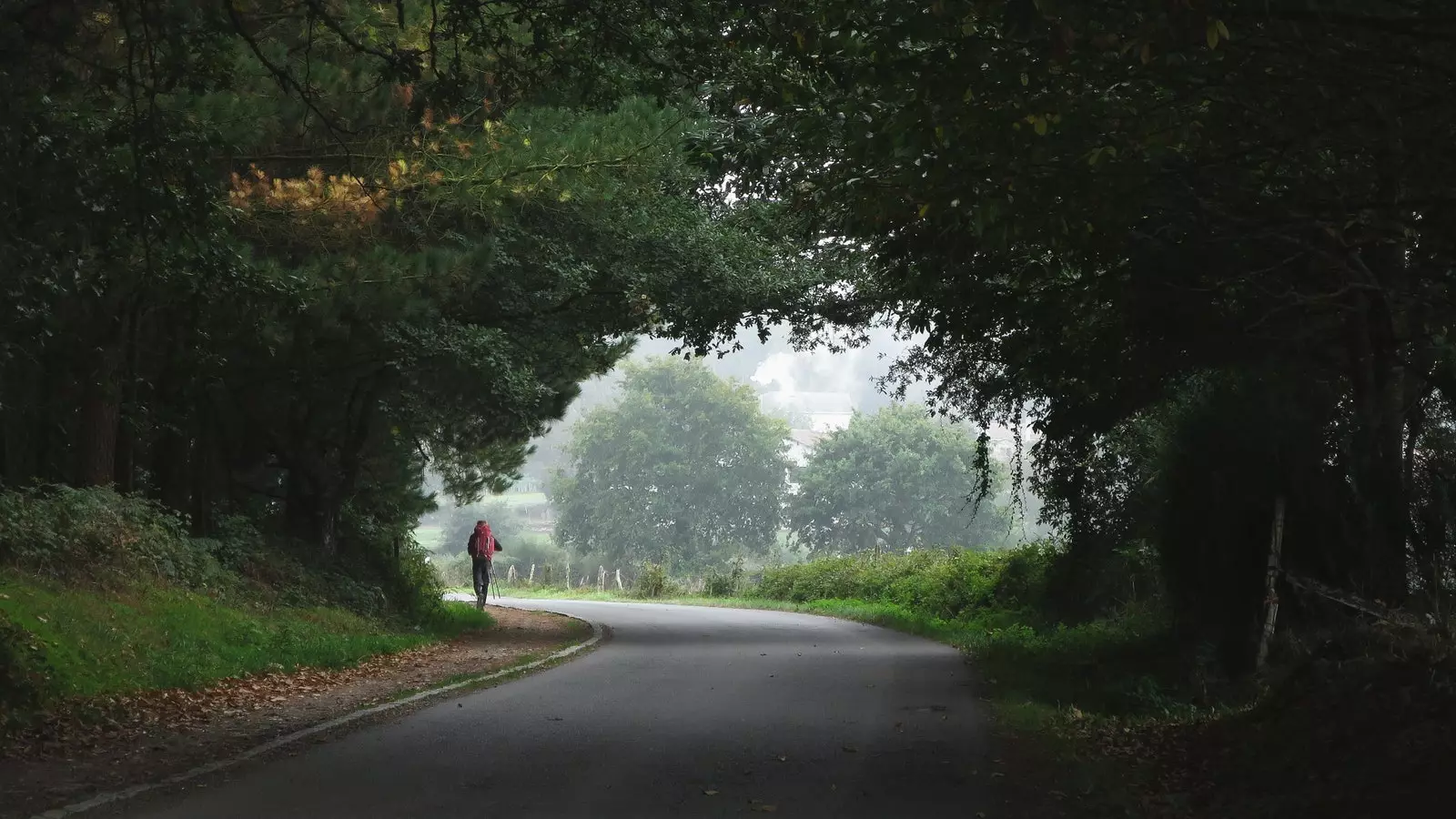
11 reasons why the Camino Ingles is the journey (and life experience) you were looking for
The name may not tell you much, although in recent years it has gained popularity, but if you did not know it, you were missing out on one of the most authentic experiences that the Camino de Santiago can offer, a way of take a peek at the phenomenon of pilgrimage and to get to know a surprising Galicia, halfway between tradition and modernity, which has become one of those perfect getaways for when we can travel again with a certain normality.
The english way It is the way that the pilgrims arrived from the British Isles used to make a pilgrimage to Santiago de Compostela, a path with two origins, Ferrol and A Coruña, which the British complemented with a section in their homeland. Finchale Abbey, between Durham and Newcastle , is still today one of the most common starting points, although there is evidence of pilgrims arriving from Bristol or from the Isle of May, near Edinburgh.
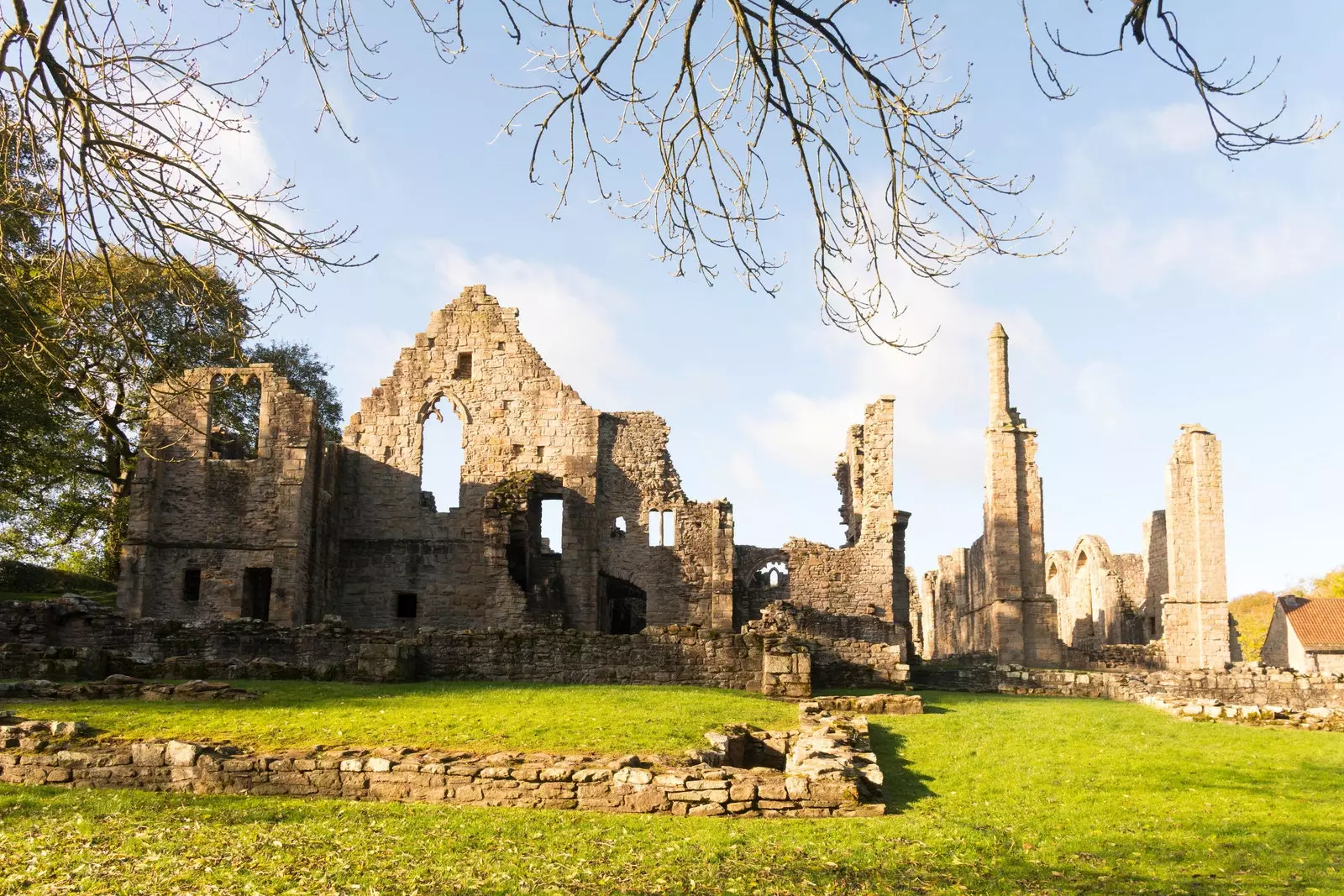
Finchale Abbey Ruins
In any case, today we are talking about the Galician section, of that path in the shape of a Greek Y that leaves the northern ports and that reaches Santiago through one of the shortest routes among those recognized as the official Camino de Santiago, but which, perhaps precisely for this reason, is also one of the most surprising.
And these are ten of the many reasons why the Camino Ingles has all the ballots to be the perfect getaway:
1.Communications
You won't find many other ways to Santiago with some communications so convenient . The English Way has an airport, with national and international connections, at the beginning and at the end. And both A Coruña and Ferrol are excellently connected by road / motorway / motorway with the rest of Galicia, with the Bay of Biscay, with the Meseta or with Portugal. Even FEVE can bring you to Ferrol from Asturias on a route that has a special charm.
All of us who have done the Camino at some point know that reaching the point of origin is not always comfortable and that adds days to the trip. That, in this case, is not a problem.
2.Length
Another enormous advantage of the English Way is its length: three or four days from A Coruña, between five and seven from Ferrol, depending on how long you want to make your walks. You don't need a vacation and, in fact, with a long bridge you have more than enough for a first contact. Because there will be more. As you do it once, rest assured there will be others.
This also implies that you do not need a great physical preparation beforehand: some stages are long, but usually not particularly hard . And, in addition, you can divide them if you do not see yourself capable. It is a journey, not a competition. And here we are to enjoy.
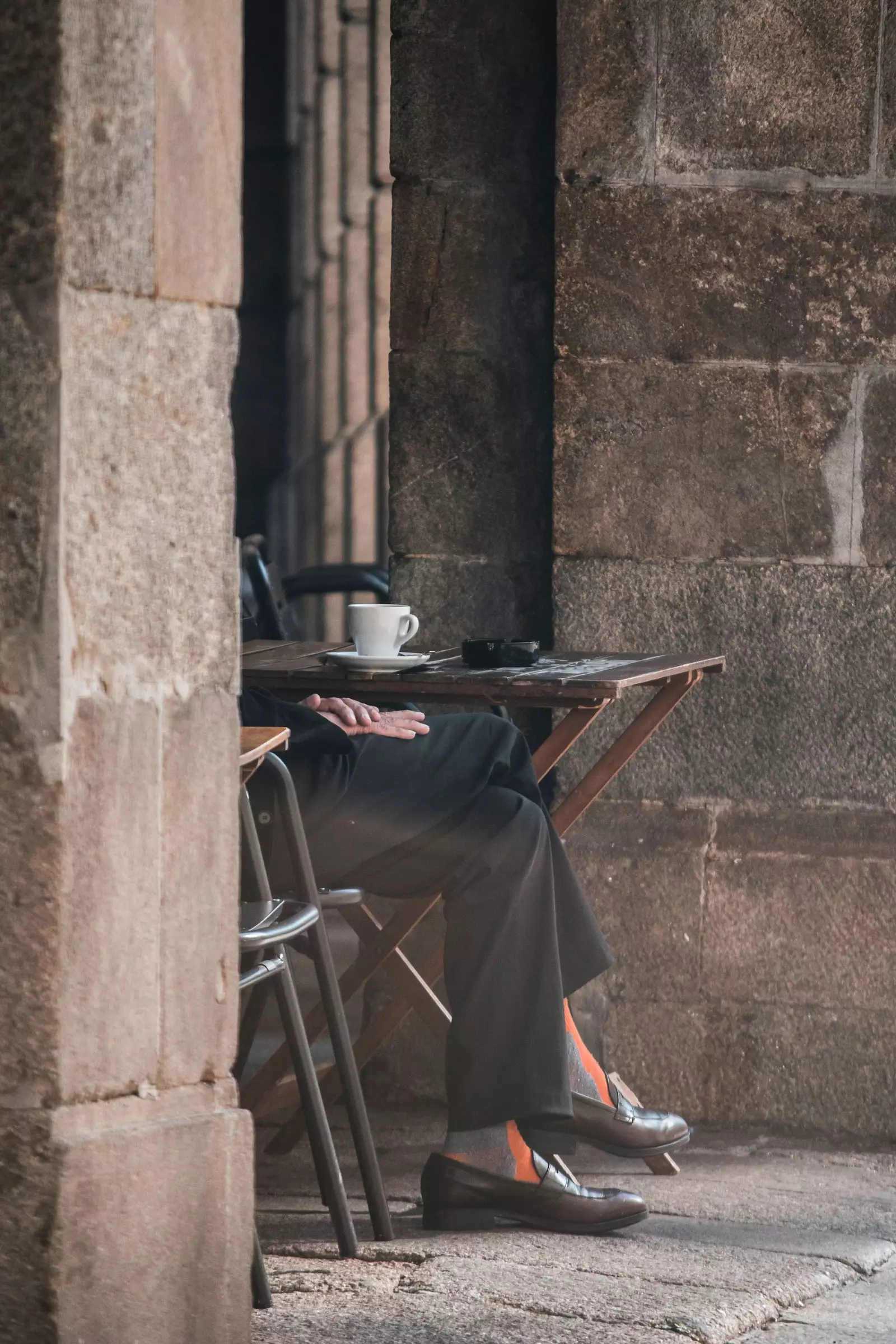
Santiago de Compostela, A Coruna
There is only one section, the slopes that ascend from Carral (if you come via the Coruña route) or from Betanzos (if you do it by way of Ferrol) which can be made a little harder. Nothing serious. taking it easy and making good use of taverns that one finds in its path, the thing is not complicated.
3. Peace of mind
Perhaps, if you have walked the Camino Frances in high season, you have found an overcrowding that you did not expect. Perhaps, although a little less, also in Portuguese.
This is something that has not yet happened on the Camino Ingles. It continues to be a quiet itinerary, with a sufficient number of hostels , but without the races to find a bed and without having to walk all the time seeing the neck of the pilgrim in front of you a few meters away.
The English Way runs between three of the main Galician cities, but it is perfectly possible to still walk along it without seeing anyone for hours. It is the perfect itinerary if you are looking to relax and unwind.
4.Landscapes
What other hiking route will take you, in less than a week, from the beaches and the villages that hang down the hillside towards the sea to forests of centuries-old oaks, natural passageways between huge laurel trees and medieval bridges?
Where are you going to find, in a single itinerary, four of the most spectacular historic quarters in northern Spain, the best contemporary architecture (of Álvaro Siza to Manuel Gallego, from Hedjuk to Grassi …), some of the best examples of neoclassical urbanism in Europe and villages where pilgrims like Charles V, Cosme de' Medici or John Quincy Adams slept?
And all through the landscape of hills of the** estuaries of Ferrol, Pontedeume or Betanzos; the plains near Ordes and mythical valleys such as that of the Tambre river as it passes through Sigüeiro**.
I'm telling you: only here.
5.Cities
When one thinks of pilgrimage, one thinks of roads that are lost on the horizon, in fields, in the tranquility of small villages. And that is also true here, but the peculiarity is that in this path it is combined, sometimes within the same stage, with the atmosphere of some of the most vibrant cities in Galicia.
Ferrol Mola . If the motto says so, it will be for a reason. To get to know the city you have to go to bars, have tapas, enjoy its atmosphere. As is the case in A Coruña, one of the most powerful cultural centers in the northwest. Walk its shopping streets, discovering artisan workshops, finding here and there a small museum or an exhibition hall and doing it within a Camino de Santiago is something unique.
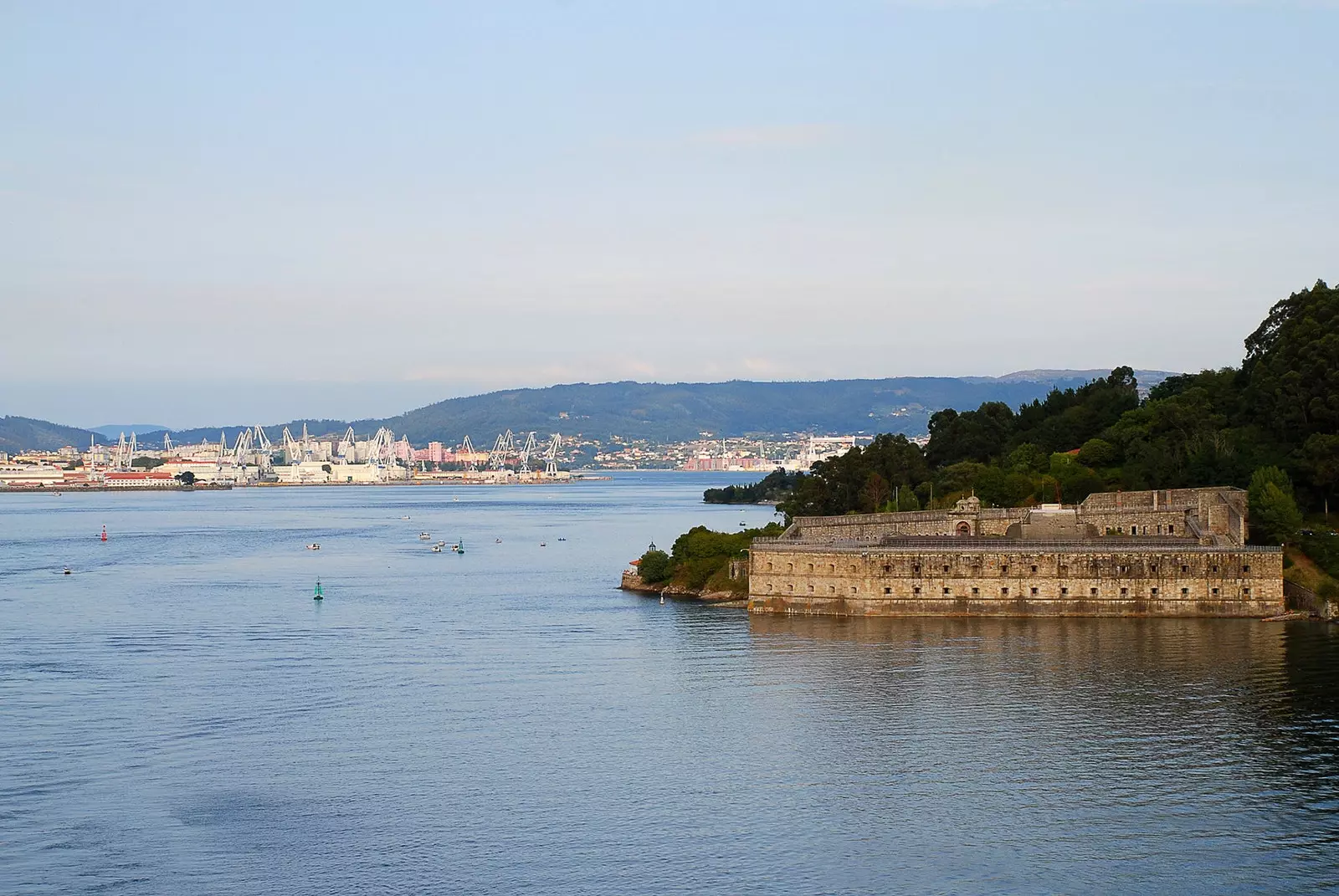
The castle of La Palma de Ferrol
And Compostela? If that wasn't enough with the atmosphere of a university city, you can enjoy film festivals there like Amal, dedicated to the creators of the Arab world, or Cineuropa. Or you can get carried away one of the cities with the most square meters of parks and gardens per inhabitant in Spain . To mention only two of the attractions that you can add to your route.
6. Seafaring culture
The path begins next to the fishing port and the military arsenal, if you decide to start from Ferrol. If you do it from the church of Santiago, in A Coruña, a few meters you will be walking through A Mariña and, a little further on, passing by the fish market.
The English Way is the perfect place to discover shellfish such as the black scallop from the Ferrol estuary , to stop and take a octopus portion in Pontedeume , to explore the Coruña neighborhood of Montealto and discover its seafaring and percebeiro past.
It is one of the few ways of Santiago in which you can see the traditional Galician boats. Or if you prefer, take a bath on the beaches of Cabanas, in Praia Grande de Miño or perhaps in Centroña, known as "Cala Hawai".
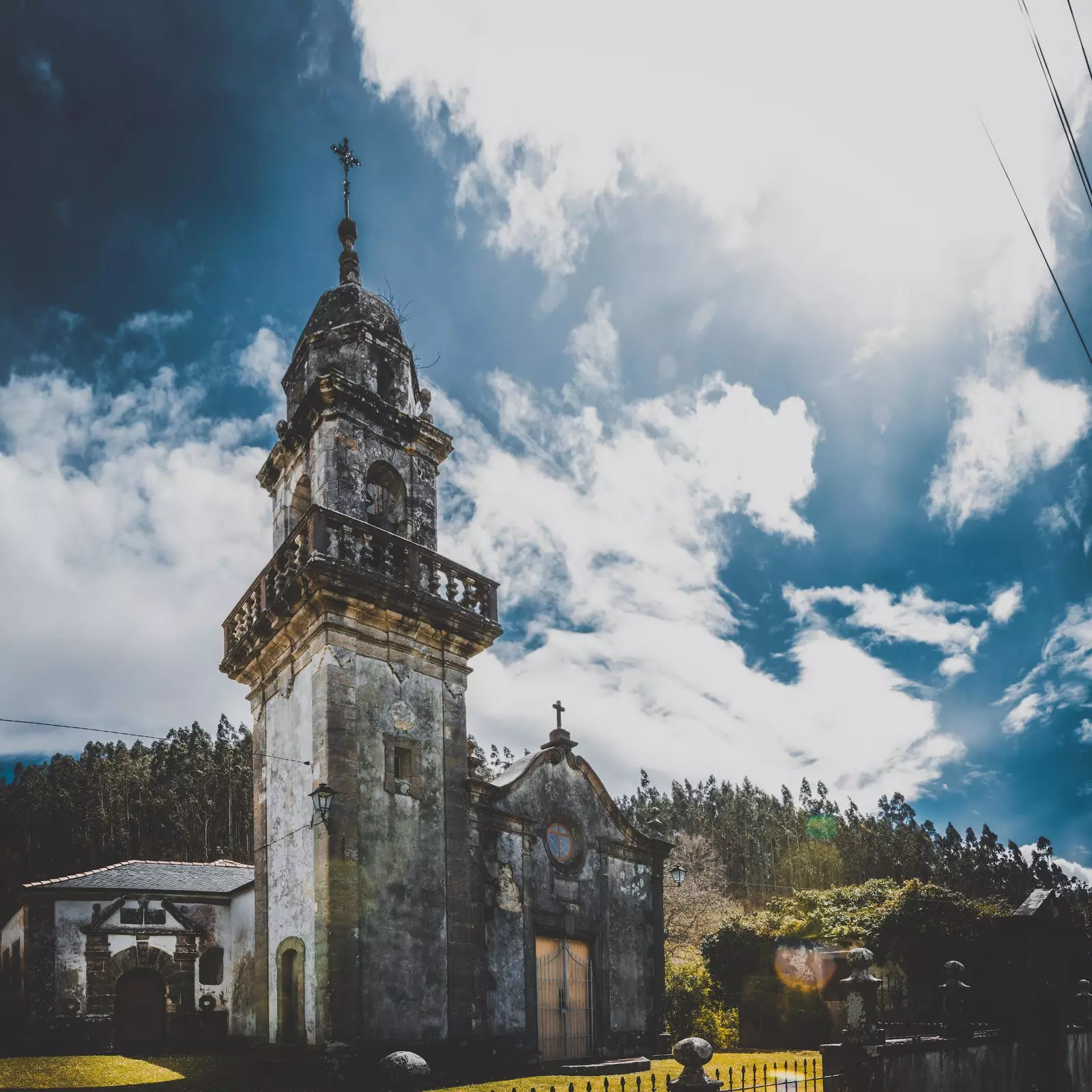
the secrets of the way
7. Museums Surely this is the great path of unknown museums, because small jewels alternate on it, such as the Shipbuilding Museum of Ferrol or the Museum of the Collegiate Church, in A Coruña , with classics like Museum of the Cathedral of Santiago.
And next to them, spectacular buildings such as the castle of San Antón, which houses the Provincial Archaeological Museum of A Coruña , or the spectacular work that hosts the Museum of Fine Arts from the same city. or the little Museum of the Marinas of Betanzos , or the unknown Ordes Costume Museum , either…
8.Culture
Two thousand years of history in just over 100 kilometres. It is said soon. But that is precisely what you can walk along the English Way, which passes next to the spectacular Castro de As Travesas or at the foot of the Castro de Elviña , both from the Iron Age, which crosses medieval historic centres, stops next to Romanesque churches such as Tiobre or Buscás.
Few roads, like this one, will make you discover the spectacular modernism of Ferrol, the architectural rationalism of authors such as González Villar. Few, like the English Way, they will embark you on a journey through Galician music, from the roots to the classics of our contemporary music . In Ferrol you can browse about the figure of Andrew Dobarro and about what is known as the Dobarism. In A Coruña you have its equivalent in Pucho Boedo.
And once the origins have been explored, you may want to continue diving into that Compostelan hardcore scene of the 80s listening to Nicho Varullo, or by the Rock Bravú of the 90s by bands like Diplomáticos from Coruña from Montealto and Ruxe Ruxe from Santiago , the indie scene by Xoel López or if you have a bit of eighties pop nostalgia, Lemons from Ferrol . And it ends with the hip hop of God Ke Te Crew, by Ordes . And all in just 100 kilometers. I think they put something in the water.
Although if you want a calmer alternative you can follow the steps of Valle Inclán, Rosalía de Castro or Suso de Toro for Compostela, those of Pardo Bazán and Manolo Rivas for A Coruña or those of Torrente Ballester for Ferrol . And discover authors like Miguel Anxo Prado , What Wenceslao Fernandez Florez or as Garcia Bodano that will make you see these landscapes with different eyes.
9.Traditional cuisine
sounds like the Betanzos omelette TRUE? Well, there you have it, halfway between Ferrol and A Coruña. And the Santiago's cake ? Another attraction of the route.

Sorry: the Betanzos tortilla does NOT have onion
And I'm sure they sound familiar to you turnip greens , although you may not know that the region of Ordes, in the central section of the route, is one of its capitals. Don't stop trying the broth (Galician. Here we take it for granted) from Casa Graña, in Bruma. And don't forget, either, the porrajo tapa in Ferrol , to look for the costrada (a type of empanada) and the proia (a sweet) in Pontedeume, to taste the bread in Carral and in Neda , where you also have to ask about the Patron Ball. And the tripe, on Sunday, in A Coruña, you'll have time to burn them on the way.
10. Contemporary kitchen
And along with tradition, the contemporary version cannot be missing. The one with Michelin stars like Veira Tree (A Coruña) or A Tafona (Santiago), that of Dani in The English Way . Because if a restaurant makes sense to try on this route, it is surely yours. And since you are in Ferrol, also try David Freire and Sinxelo. Or the Barcia tapas. And in A Coruña Hünico, Terreo, Millo, Pablo Gallego, Culuca.
Or Abastos 2.0, A Maceta, Pampín Bar, Solleiros or Anaco in Santiago. And if you still feel like it, take advantage of the fact that you are going to pass by A Cepa, in O Burgo. It will be by sites.
11. Charming historic quarters
Two declared sets World Heritage (the Tower of Hercules and the historic center of Santiago) are the headliners. But there is much more. Betanzos is one of the great unknowns, a jewel with a medieval layout perched on a hill and full of Gothic churches, squares and taverns through which you have to wander aimlessly.
Or Pontedeume, with the medieval tower at the foot and that historic center with a porch that climbs up the hillside towards the baroque church of Santiago. and next to them castles like that of the Andrade, or convents such as O Couto ; medieval aqueducts like the one in Santiago or bridges like the one in Ponte do Porco . But we had said that there would be ten reasons and here we leave it, because the best thing you can do is discover the rest on the ground as soon as you have the chance.
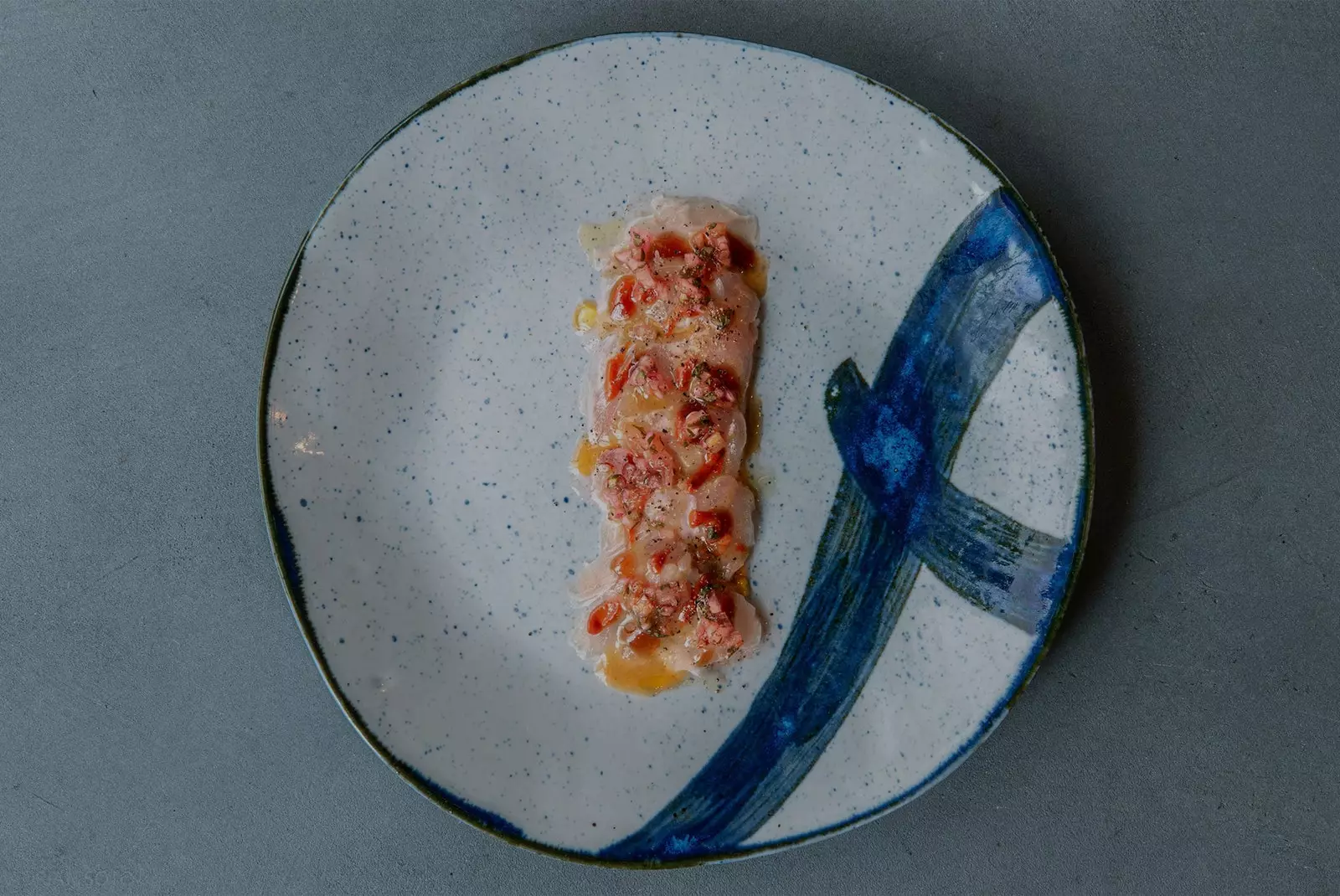
A gastronomic wonder of epic proportions awaits you in Ferrol: O Camiño do Inglés
